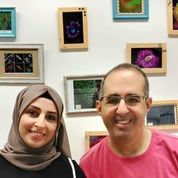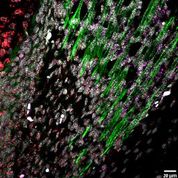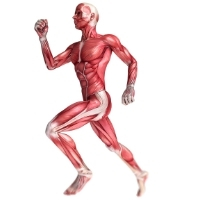Research: Cells Expressing Tendon Markers Fuse into Muscles
Researchers at the Rappaport Faculty of Medicine at the Technion – Israel Institute of Technology have made a breakthrough discovery that muscle fibers are of hybrid origins, and their tips have a “fibroblastic, tendon-like property” that arises from fibroblasts’ fusion. The researchers’ findings highlight a mechanism that enables a smooth transition from muscle fiber characteristics towards tendon features that is essential for forming robust muscle tendon junctions (MTJs). The researchwas recently published in Nature Communications.

Using innovative techniques for analyzing single cells (scRNAseq), Professor Peleg Hasson and doctoral student Wesal Yaseen Badarneh reexamined the classical view of distinct identities for the tissues composing the musculoskeletal system. They identified a novel cluster of cells, which they termed dual identity cells. These dual identity cells are fibroblast-derived, yet express myogenic transcriptional programs and fuse into the tips of the developing muscle fibers along the muscle tendon junctions, facilitating the introduction of fibroblast-specific transcripts into the elongating myofibers.
Tendons are the connective tissues that connect between the muscles and bones. Consequently, the tendons’ mechanical properties are crucial in order for humans and other vertebrates to bear varying pressures and perform essential movements. When the development of MTJs is damaged, it may result in clinical phenomena including multiple types of muscle diseases. Therefore, understanding the molecular mechanism underlying MTJ development is very important.
Although vertebrate muscles and tendons are derived from distinct embryonic origins, they must interact in order to enable muscle contraction and body movements. It is still not understood how these two distinct tissues, each with its own biophysical and biochemical properties, form robust junctions that are able to withstand contraction forces. Prof. Hasson and his team identified fibroblasts that have switched on a myogenic program facilitating a seamless transition from a muscle fiber characteristic into a tendon-like structure. Their findings suggest that dual characteristics of junctional cells could be a common mechanism for generating stable interactions between tissues throughout the musculoskeletal system.
The research was carried out in collaboration with researchers from the University of Cincinnati College of Medicine and the Cincinnati Children’s Hospital Medical Center. It was supported by the Israel Science Foundation, the Rappaport Family Institute at Technion, Pew Charitable Trusts, and the National Institutes of Health (NIH).

Click here for the paper in Nature Communications


